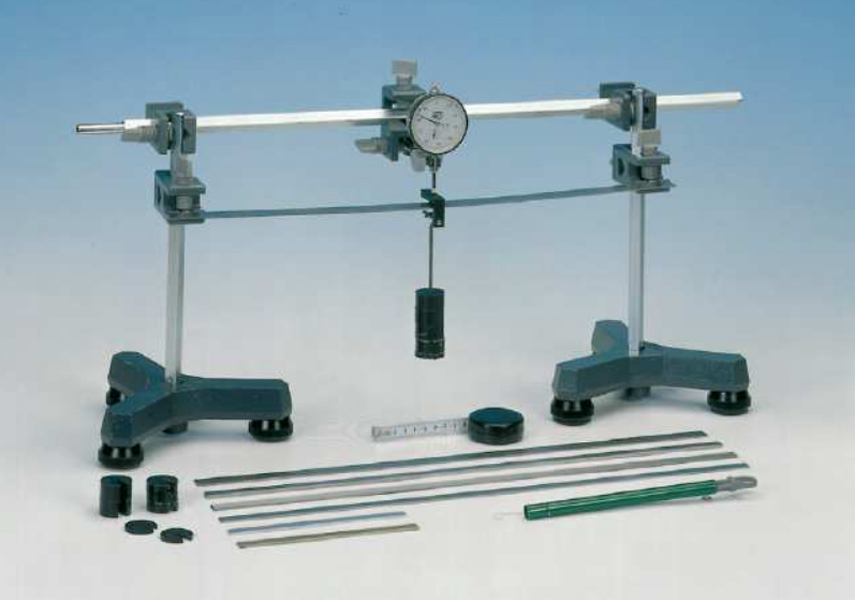Modulus of elasticity / Youngs Modulus

Principle
A flat bar is supported at two points. It is bent by the action of a force acting at its centre. The modulus of elasticity is determined from the bending and the geometric data of the bar.
Benefits
- Find out the parameters that give a bar stability
- Measure the difference of elasticity in various metals with different lengths
- Learn how to determine forces with a dial gauge
Measuring tape, l = 2 m
Flat bars, set
Tripod base PHYWE
Support rod, stainless steel, l = 250 mm, d = 10 mm
Support rod, stainless steel, 750 mm
Bolt with knife-edge
Fish line, l. 100m
Weight holder,
Slotted weight, black, 10 g
Slotted weight, black, 50 g
Vernier calliper stainless steel 0-160 mm, 1/20
Dial gauge 10/0.01 mm
Holder for dial gauge
Knife-edge with stirrup
Spring balance,transparent, 1 N
Right angle clamp expert
Tasks
- Determination of the characteristic curve of the dial gauge.
- Determination of the bending of flatbars as a function of the force; at constant force: of the thickness, of the width and of the distance between the support points.
- Determination of the modulus of elasticity of steel, aluminium and brass.
What you can learn about
- Young’s modulus
- Modulus of elasticity
- Stress
- Deformation
- Poisson’s ratio
- Hooke’s law